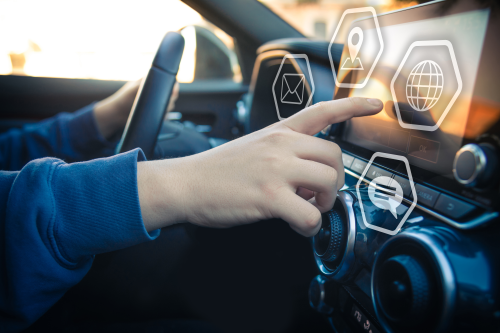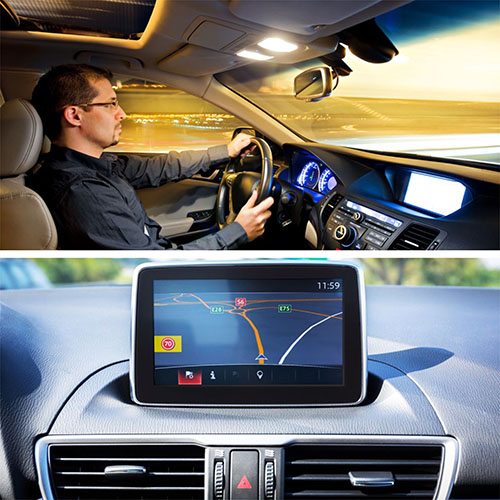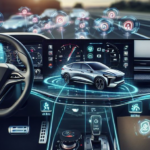Although technology and innovation continue to become more prevalent, the development of complex dashboard touch screens in automobiles is surprisingly on the downward trend due to safety concerns, consumer backlash and design preferences. Modern dashboards may give a futuristic appearance with more features and capabilities; however, they create distractions and require more attention off the road to perform specific functions. This can include navigation, Wi-Fi, USB, and Bluetooth connections, Odometer readings, radio/audio volume, temperature and more. Regardless of the seemingly endless features of touch screen dashboard systems, vehicles with old fashioned physical buttons might be making a glorious return.
The major spread of dashboard touch screen design originated with Tesla’s tech-infused modernity of positioning itself as a “tablet-on-wheels”. Although this design is cost cutting and portrays a futuristic appeal, one of the major reasons for the pullback of complex touchscreen dashboard designs is driver distraction. The National Highway Traffic Safety Administration, or NHTSA, assessed driver distraction from infotainment systems, and published voluntary guidance in 2013 recommending that a driver be able to complete any infotainment task with glances of under two seconds, totaling a maximum of 12 seconds. A study by the AAA Foundation concluded that infotainment touch screens can distract a driver for up to 40 seconds, long enough to cover half a mile at 50 mph. Push buttons and dials can be controlled solely through physical touch, which allows drivers to keep their eyes on the road. Think of it this way: it is drilled in us to stay off our iPhone while driving, yet no one complains when we are essentially using an iPad built onto the dashboard while driving.
Studies and evidence support the idea that completing tasks with screens takes much longer than with physical buttons. Swedish researchers from an automotive magazine Vi Bilägare performed a thorough test of the HMI system (Human-Machine Interface) and evaluated the time for a driver to perform radio, HVAC, etc. functions in late model vehicles with touchscreens vs. a 2005 Volvo with push buttons. A few of the results concluded the times to perform these four tasks were:
- 2005 Volvo V70 – 10 seconds
- BMW iX – 30.4 seconds
- MG Marvel R – 44.9 seconds
The BMW and MG vehicles have only touchscreens and no buttons for drivers to engage the infotainment controls. Results show the easiest car to understand and operate is the old Volvo, which required the least distance traveled at 68 mph for a driver to operate interior controls. On the other hand, the modernized MG Marvel required approximately 4 times the distance and time to operate. Regardless of the perceived benefits of touch screen infotainment systems, car manufacturers must take safety concerns into consideration, as distracted driving is the number one cause of car accidents.
CED’s team of engineers have the capability to fully analyze every aspect and detail of a distracted driving accident. Our experts can download and analyze drivers’ interactions with infotainment systems and opine upon its contributions to an accident. Vehicle investigations require thorough analysis of all of the available data; CED engineers have the capability and training to recover data from Infotainment systems that can be instrumental in determining the cause of an accident.





